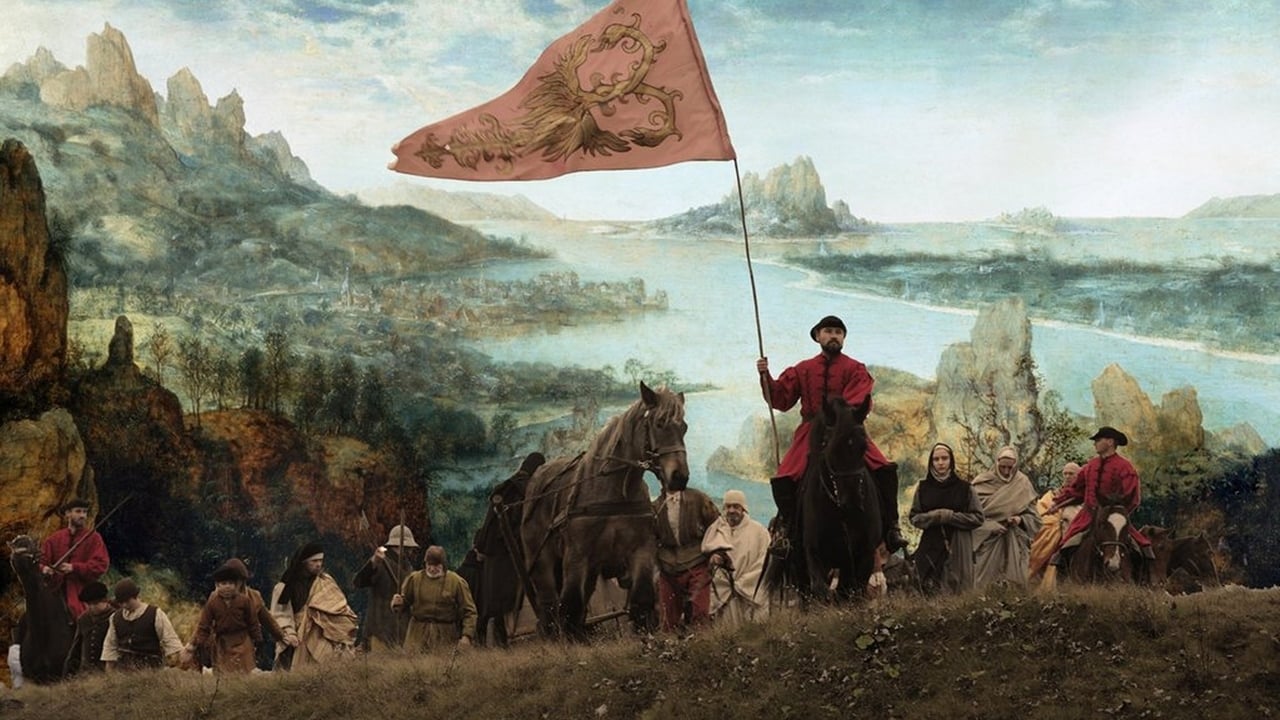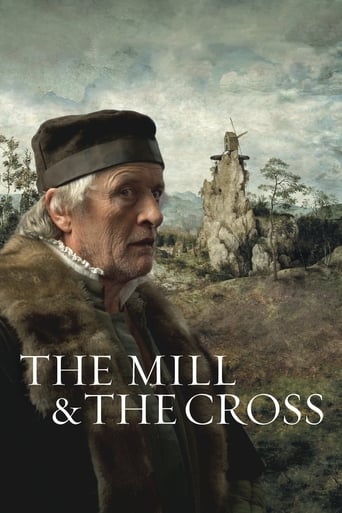

An unexpected masterpiece
... View MoreA film of deceptively outspoken contemporary relevance, this is cinema at its most alert, alarming and alive.
... View MoreIt's a good bad... and worth a popcorn matinée. While it's easy to lament what could have been...
... View MoreThe movie is made so realistic it has a lot of that WoW feeling at the right moments and never tooo over the top. the suspense is done so well and the emotion is felt. Very well put together with the music and all.
... View MoreThe Mill and the Cross (2011)Maybe I anticipated this for too long, hearing about its production, and teaching in an Art History department myself. The result is both astonishing and boring as heck. I know, there is a kind of absorption that happens through silence and slow appreciation. And there is even the astonishment of looking without really thinking, or feeling, for the narrative or the characters.This is, for sure, a visually wonderful movie. The way it works out the scenery and milieu of a period based on a single painting is brilliant and ambitious. The mise-en-scene might in fact be the only and singular point of it all. So on that level, eleven stars. Terrific. Mind-blowing.But that exercise in naturalistic re-creation, in enlivening a masterpiece on canvas by Bruegel from 1564, is not, to me, enough. You will know after ten minutes whether to continue. I have heard of people being just spellbound by it all, so that hopefully would be your feeling. I tried to make the characters have meaning on some level, either in their interactions, or in their actions alone, or through what they did to the world around them. Much of what happens feels more medieval than Renaissance, to me, but I'm sure that was researched thoroughly. (Bruegel was painting at a time when the Renaissance from Italy had made its way thoroughly north to the lowland countries and beyond.)It is fun (and indicative of the seriousness here) that both Michael York and Charlotte Rampling took part, late in their careers. That was one of the draws, for sure. But don't expect revelations there, either. Expect in fact only what the director, Lech Majewski, intended—a film version of the painting, set in its larger context but always based on and drawing from this one admittedly fantastic painting. Which might be your starting point, before launching into this one and half hour homage.
... View MoreAn art movie about the 16th century's arts. It was based on the book of the same name which details the landscaper Pieter Bruegel's painting 'The Procession to Calvary'. A movie specially made for classical painting lovers.The movie had very less talkings and everything should be learnt by watching the pictures which depicts painting like series of frames. So there's nothing much to talk about the movie. One of the best ever production designs. Frankly, I was less enjoyed due to lack of knowledge about Bruegel, but glad I saw it and come to know few things about 1500s culture through his paintings.After all, I was not stranger to 'The Procession to Calvary' only by a few weeks before watching this movie. Recently I saw a movie called 'Museum Hours' and it helped a bit to understand this movie. In that movie a guide, an expert briefs in a scene about this painting and the reason behind it.It was a very unique movie, which still won't exactly portray as it had happened. A glimpse about the idea of it might have been like that. More like an imaginary world created behind the magnificent art work. Not suitable for all, especially those who watch movies for entertainment should stay away from it.
... View MoreI really like when the come out with a film like this. I like costume dramas, but this one is so interesting because it was made based on a painting and it works with a very interesting subject of Protestantism in Flanders and tryouts of Spanish militia to eradicate it. Not a lot of the films was made about the subject, and it clearly shows desperation of the Spanish militia to eradicate, at that time, very strong Protestant movement in Flanders. How state of the affairs came to that? I would track it down to Pope Alexander VI Borgia and total corruption of the Curria of the late 1490s. It was inevitable that someone like Martin Luther to show up, and it was a downhill for the northern Europe from that time onwards as far as Roman Catholicism.Beside that, cinematography is great and costimography as well. True holiday for the eyes. I enjoyed every moment of it.
... View MoreThe Mill and the Cross (2011) The Polish film "The Mill and the Cross" was co-written and directed by Lech Majewski It stars Rutger Hauer as Pieter Bruegel, and co-stars Charlotte Rampling and Michael York.The film consists of an attempt to bring to life Bruegel's 1564 painting, "The Procession to Calvary." I have seen this painting in the Kunsthistoriche Museum in Vienna. Once you've seen it, you don't forget it, because it is filled with people and action. (Although, in the painting, Jesus has just collapsed under the weight of the cross, so, in a sense, action has been frozen for a few seconds.)The painting is also remarkable for a very strange symbol--a windmill placed high atop a stony crag. In the film, Bruegel explains that the miller looks down from his mill and sees everything that is happening below, just as God looks down from heaven and can see everything. So, the mill and the miller work symbolically. However, in a practical sense, the mill would never be that high on an large, steep, stony crag. If a mill were really in that location, no one could bring the wheat to the mill or take away the flour. The other dominant vertical structure is a cartwheel, raised high on a long pole. This was the device used by the Spanish rulers of the Netherlands to execute and display prisoners. The prisoner was tied to the wheel, and the wheel was hoisted far up in the air. The device prevented anyone from helping the person--if alive--or removing the body. Only the carrion birds could reach the body, which they did, with predictable results.Technology in the 21st Century makes everything possible, so it's no surprise that the painting is reproduced in the film in a real landscape. Sometimes all the figures are frozen, but other times you can see a cow moving or some other action taking place. The special effects are routine by now, but the manner in which they are used is not routine.We really have the sense that we are looking at a landscape, and the artist is putting it down on canvas before our eyes. This is a highly creative way to look at life the way an artist sees it, and then look at the way life is transformed and committed to canvas.We saw this film on the large screen at the excellent Rochester Polish Film Festival. It really will work better in a theater. However, if that's not an option, it's worth seeing on DVD.
... View More